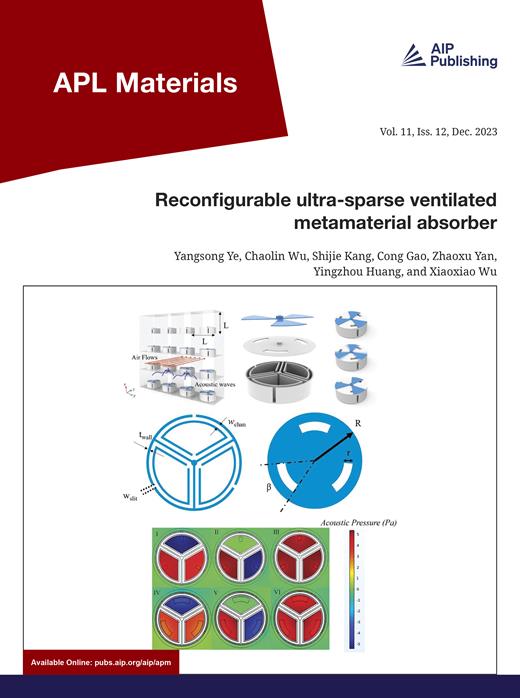二元氧化物的埃林厄姆图
IF 5.3
2区 材料科学
Q2 MATERIALS SCIENCE, MULTIDISCIPLINARY
引用次数: 0
摘要
通过调整氧化环境和材料化学来控制成分的氧化态,对于成功合成目标二元或多组分氧化物至关重要。我们对 137 种二元氧化物进行了全面的热力学分析,以计算它们的埃林厄姆图。结果发现,容易氧化的 "活性 "元素是 f 族元素(镧系元素和锕系元素)、第二、第三和第四族元素(碱土、Sc、Y、Ti、Zr 和 Hf)以及 Al 和 Li。相比之下,"惰性 "元素很容易被还原。它们是贵金属(铜、银,尤其是金)、铂族元素以及汞和硒。基于机器学习的序列特征选择表明,氧化的难易程度可以用纯元素的电子结构来表示,例如它们的 d 和 s 价电子、门捷列夫数和基团,这使得元素周期表成为定性评估氧化难易程度的有用工具。与氧化难易程度相关性较弱的其他元素特征是热化学性质,如纯元素的熔点和 298 K 时的标准熵。应用埃林厄姆图可以预测多组分材料的氧化情况,例如铁-20Cr-20Ni 合金(以重量百分比计)和 AlCoCrFeNi 等摩尔高熵合金。这些基于埃林厄姆图的预测与使用 CALPHAD 方法进行的热力学计算和文献中的实验观察结果一致。本文章由计算机程序翻译,如有差异,请以英文原文为准。
Ellingham diagrams of binary oxides
Controlling the oxidation state of constituents by tuning the oxidizing environment and materials chemistry is vital to the successful synthesis of targeted binary or multicomponent oxides. We have conducted a comprehensive thermodynamic analysis of 137 binary oxides to calculate their Ellingham diagrams. It is found that the “reactive” elements that oxidize easily are the f-block elements (lanthanides and actinides), elements in groups II, III, and IV (alkaline earth, Sc, Y, Ti, Zr, and Hf), and Al and Li. In contrast, the “noble” elements are easily reduced. These are coinage metals (Cu, Ag, and especially Au), Pt-group elements, and Hg and Se. Machine learning-based sequential feature selection indicates that the ease of oxidation can be represented by the electronic structures of pure elements, for example, their d- and s-valence electrons, Mendeleev numbers, and groups, making the Periodic Table a useful tool for qualitatively assessing the ease of oxidation. The other elemental features that weakly correlate with the ease of oxidation are thermochemical properties such as melting points and the standard entropy at 298 K of pure elements. Applying Ellingham diagrams enables the oxidation of multicomponent materials to be predicted, such as the Fe–20Cr–20Ni alloy (in wt. %) and the equimolar high entropy alloy of AlCoCrFeNi. These Ellingham diagram-based predictions are in accordance with thermodynamic calculations using the CALPHAD approach and experimental observations in the literature.
求助全文
通过发布文献求助,成功后即可免费获取论文全文。
去求助
来源期刊

APL Materials
NANOSCIENCE & NANOTECHNOLOGYMATERIALS SCIE-MATERIALS SCIENCE, MULTIDISCIPLINARY
CiteScore
9.60
自引率
3.30%
发文量
199
审稿时长
2 months
期刊介绍:
APL Materials features original, experimental research on significant topical issues within the field of materials science. In order to highlight research at the forefront of materials science, emphasis is given to the quality and timeliness of the work. The journal considers theory or calculation when the work is particularly timely and relevant to applications.
In addition to regular articles, the journal also publishes Special Topics, which report on cutting-edge areas in materials science, such as Perovskite Solar Cells, 2D Materials, and Beyond Lithium Ion Batteries.
 求助内容:
求助内容: 应助结果提醒方式:
应助结果提醒方式:


